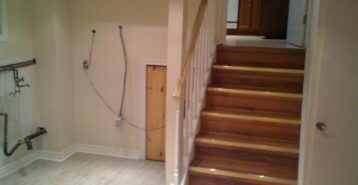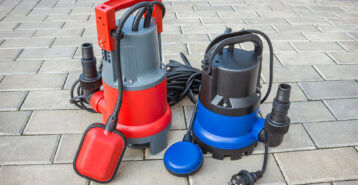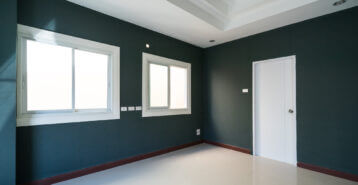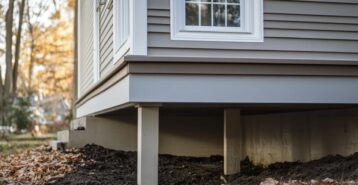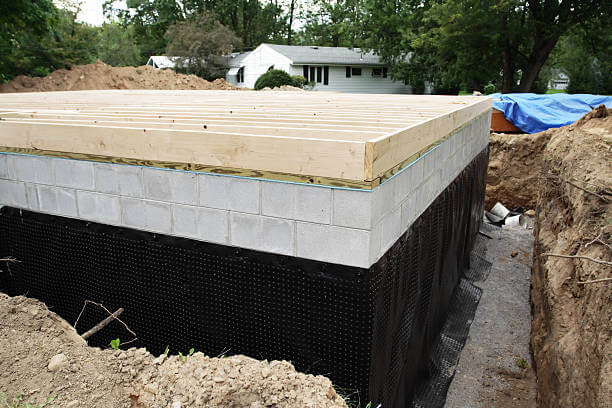Waterproofing Basement Walls From the Inside
If you’re dealing with musty odors, damp walls, or water creeping into your basement, interior waterproofing can help. This approach focuses on managing moisture from inside the home. It involves sealing cracks, applying waterproof coatings, or installing interior drainage systems that redirect water to a sump pump.
Interior waterproofing is often less expensive and less disruptive than exterior methods, since it doesn’t require excavation. (For a full comparison, see our exterior waterproofing guide.) It’s also a practical option for homeowners looking to make their basement more livable, especially when water problems are mild to moderate.
While DIY fixes like sealants and crack injections can handle small leaks, larger issues usually require a professional.
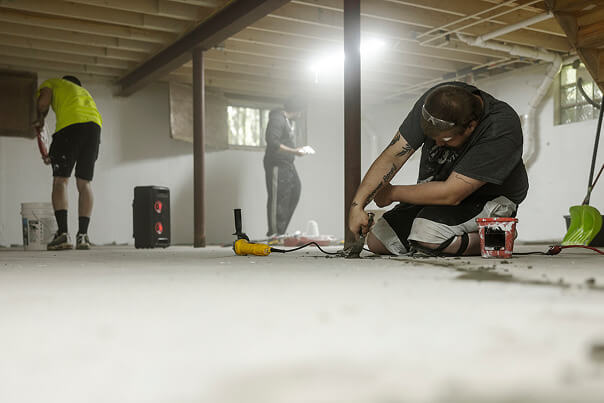
How Does Interior Basement Waterproofing Work?
Interior waterproofing works by controlling water once it has entered the basement and moving it away from your living space. The process usually starts with identifying where moisture is coming in: through cracks, foundation walls, or floor joints.
Common steps include:
- Drainage installation. First, contractors may remove a small strip of the basement floor along the walls to install a French drain and perforated pipes. These direct water to a sump pump.
- Sump pump installation. Next, the sump pump collects water from the drains and pumps it safely outside.
- Wall protection. Then, to keep water from seeping through walls, contractors may install waterproof membranes, vapor barriers, or sealants that guide moisture down into the drainage system.
- Addressing root issues. Additionally, gutters, grading, or landscaping may need attention to reduce water pressure against the foundation.
This layered approach prevents standing water, reduces humidity, and makes the basement safer and more comfortable.
Can You Waterproof a Basement Yourself?
Some small waterproofing tasks are DIY-friendly, like sealing small cracks with epoxy or applying waterproof paint to basement walls. These solutions usually cost under $500 in tools and materials and can provide short-term relief for minor moisture issues.
However, installing a full interior drainage system or sump pump is not a DIY project. These require professional skills in plumbing, concrete, and foundation work. Poor installation can lead to more water damage and higher repair costs later.
Rule of thumb: You can try DIY if you’re dealing with small leaks or damp spots. Call a professional if water is pooling, spreading, or getting through your repairs.
➤ See our top picks for the best sump pump brands and best basement waterproofing companies.
How Much Does Interior Basement Waterproofing Cost?
The cost of interior basement waterproofing depends on whether you choose a DIY fix or a professional system. On average:
- Waterproof paint costs $1 to $6 per square foot.
- Acrylic sealant costs $3 to $4 per square foot.
- Epoxy sealant costs $5 to $7 per square foot.
- An interior drainage system with a sump pump costs $4,500 to $10,000 (depending on basement size, drainage design, and labor costs).
DIY crack sealing and coatings can sometimes be done for under $500 in tools and materials. However, these are usually temporary fixes. Professional drainage systems cost more upfront but provide long-term protection against flooding and humidity.
➤ For a full comparison of interior vs exterior waterproofing prices, see our basement waterproofing cost guide.
What Factors Affect the Cost of Interior Basement Waterproofing?
Several factors determine the final price of your interior waterproofing project:
- Basement size. Larger basements require more sealant, liner, or drainage installation.
- Type of waterproofing. Simple sealants are far cheaper than sump pump systems.
- Local labor rates. Costs vary by region and contractor.
- Climate. Homes in areas with heavy rain, flooding, or high groundwater may need more extensive systems.
- Pre-existing damage. Mold remediation, foundation crack repair, or structural fixes add to the total.
- Permits and inspections. Some municipalities require them, which can increase costs.
- Unexpected issues. Poor drainage design or hidden structural problems may increase the scope of work.
Because every basement is unique, it’s best to get multiple quotes from local contractors before deciding.
How Can Interior Basement Waterproofing Save You Money?
Interior waterproofing may seem expensive, but it often pays for itself over time. Here’s how:
- Lower energy bills. A drier basement reduces humidity, making it easier for your HVAC system to regulate temperature.
- Fewer repairs later. Fixing moisture early prevents costly structural damage or widespread mold remediation.
- Rebates and incentives. Some utility companies and local governments offer rebates for energy-efficient improvements like sealing and waterproofing.
- Financing options. Many contractors allow you to spread payments out, making larger projects more affordable.
To make sure you’re getting a fair price, get at least three to four quotes from local contractors. Compare services, warranties, and materials — not just the price — to know you’re getting long-term value.
Who Needs Interior Basement Waterproofing?
If you’re dealing with basement moisture, leaks, or flooding, you can benefit from interior waterproofing. It’s especially valuable if you live in:
- Rain-heavy or flood-prone regions. Frequent storms or high groundwater increase the risk of leaks.
- Humid climates. Areas like the South and Midwest often struggle with damp basements.
- Homes near slopes or water sources. Sloped lots or being close to lakes and rivers can worsen basement water issues.
- Older homes. Aging foundations or poor drainage make water intrusion more likely.
If you’ve noticed musty odors, dampness, or visible water in your basement, interior waterproofing can help protect your home’s structure and make the space more livable.
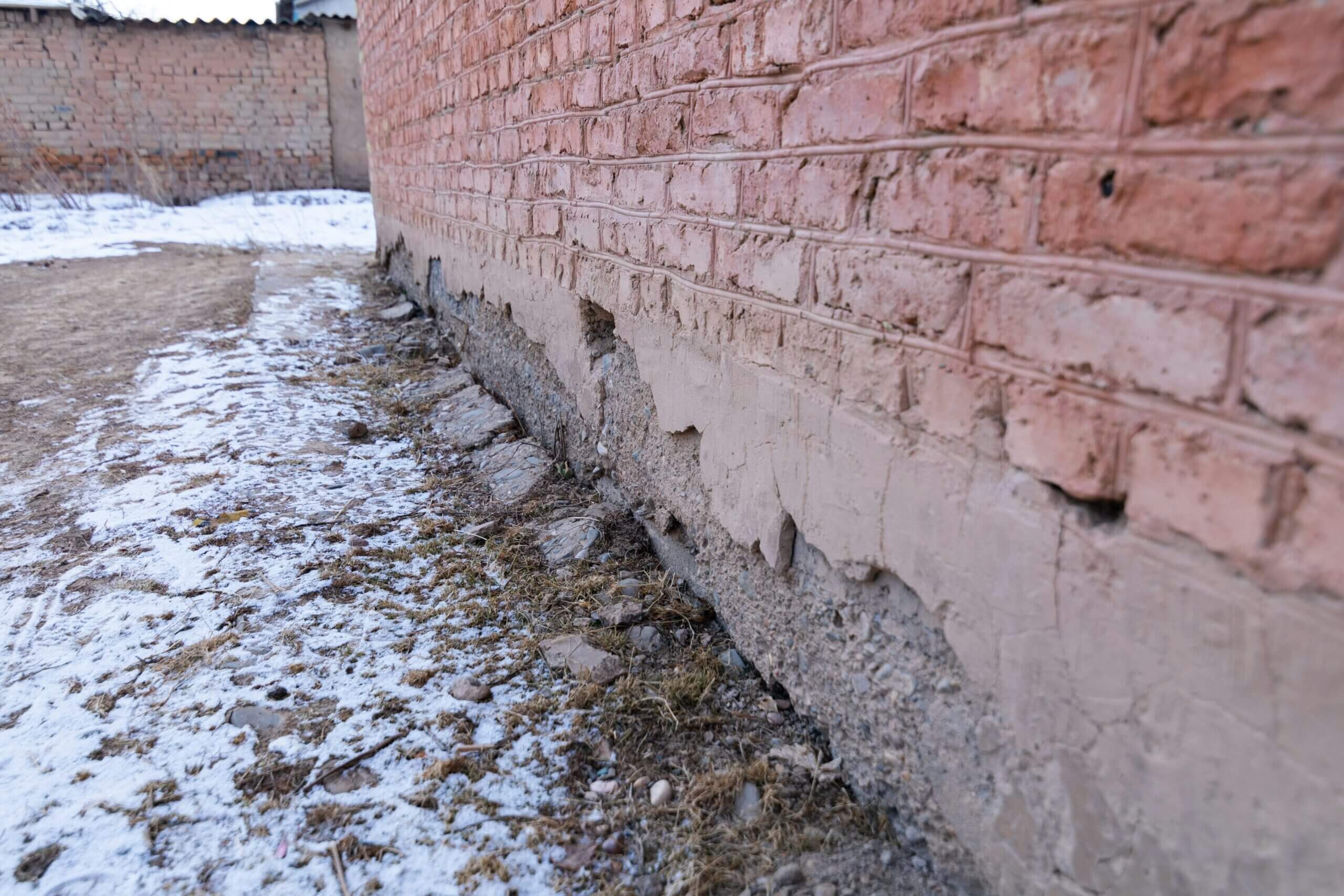
Signs Your Basement Needs Interior Waterproofing
How do you know if it’s time to waterproof your basement from the inside? Look for these common warning signs:
- Musty odors. A damp, stale smell often points to hidden leaks or poor ventilation.
- Condensation or efflorescence. Moisture on walls or white mineral deposits are signs of water intrusion.
- Clammy air. A cold, humid feeling in the basement indicates excess moisture.
- Warped doors or windows. Sticking frames can result from wood expanding due to basement humidity.
- Mold or mildew. Visible growth is a sign of ongoing moisture problems that need immediate attention.
Even small signs should be addressed quickly to prevent structural damage and costly mold remediation. For a full checklist, see our guide to signs you need basement waterproofing.
Is Interior Basement Waterproofing Worth It?
Yes, interior basement waterproofing is usually worth it. It:
- Protects your home’s structure by reducing moisture that causes cracks, rot, and warping.
- Improves air quality by preventing mold and mildew.
- Makes the basement usable as a safe, comfortable space.
The value depends on your situation, including basement size, climate, and whether you choose DIY or professional solutions. Homeowners in flood-prone or humid regions often see the greatest return.
➤ For a deeper breakdown of long-term benefits, visit our guide: Is basement waterproofing worth it?.
Compare top-rated foundations pros in your area.
Read real homeowner reviews, explore qualifications, and view promotions. Modernize makes it easy to browse professionals and find one that will be perfect for your project.



